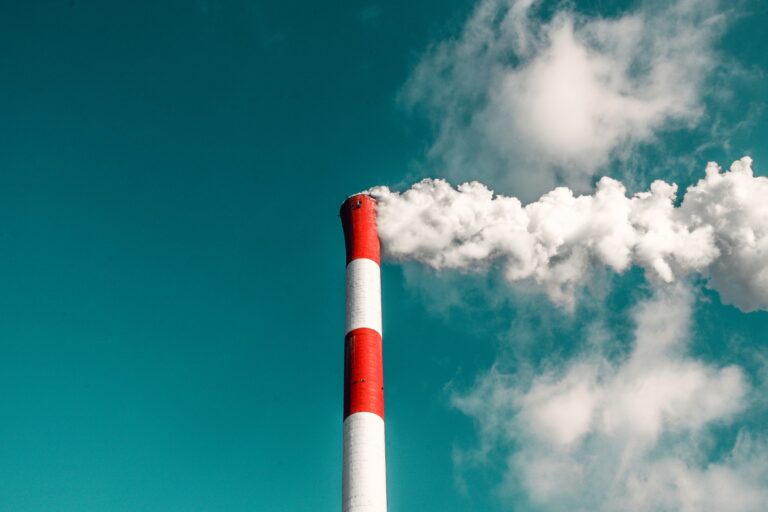On 25 July 2022, Sir Keir Starmer, leader of the Labour Party Opposition in the United Kingdom gave a speech setting out his party’s plan for the UK’s economy. The theme of his speech was that the UK must focus on ‘growth, growth, growth’ and that this must be pursued with a net-zero emissions target. He said:
We will not be distracted by the siren calls…that say economic growth and net-zero do not go together. That these two objectives are somehow in tension. Or even that we should actively pursue a policy of no growth. I reject that completely…A plan for net-zero needs growth. A plan for growth needs net-zero.
… the way I see it – some nation is going to lead the world in electric vehicles, in floating off-shore wing, in new hydrogen and nuclear technologies. Why not Britain?
In the language of the United Nation’s 17 Sustainable Development Goals (SDGs), this brings together Goals 8 (Economic Growth) and 13 (Climate Action) with 7 (Affordable and Clean Energy) and 9 (Industry, Innovation and Infrastructure).
Starmer’s speech sounded fresh in the context of the Conservative Party’s process to elect its next leader and the next Prime Minister of the UK.
But the argument has been made before and persuasively. In 2017, President Obama wrote an article, ‘The irreversible momentum of clean energy’ in which he argued that there had been a ‘decoupling’ of ‘energy sector emissions’ and economic growth. He said:
The United States is showing that greenhouse gas mitigation need not conflict with economic growth. Rather, it can boost efficiency, productivity and innovation.
Since 2008, the United States has experienced the first sustained period of rapid GHG [greenhouse gas] emissions reductions and simultaneous economic growth on record. Specifically, CO2 emissions from the energy sector fell by 9.5% from 2008 to 2015, while the economy grew by more than 10%.
Obama’s article cited evidence from around the world that economies can grow while emissions do not.
He observed that businesses had started to engage in emissions reduction activities because this ‘can also boost bottom lines, cut costs for consumers, and deliver returns for shareholders’.
Five years ago, Obama identified that the ‘electric-power sector’ was being transformed especially because the cost of renewable energy dropped dramatically between 2008 and 2015 due to policy settings, largely supply side incentives. But he identified that the need for such incentives would be superseded by the coupling of technological advances and consumer demand.
The challenge for governments today is how to manage the renewable energy transition. Australia and the UK are still weighing whether the transition should be assisted by government. This is a challenging question because it depends on the characteristics of particular markets in the individual country as well as emissions reduction targets. Politics inevitably come into play.
When a government has decided to play a role in the transition, an equally challenging question is, how should and can the transition be accelerated?
What does this have to do with tax policy?
Historically, the favoured approach for addressing climate change was to put a price on carbon, either through a carbon tax or through an emissions trading scheme (ETS). While these options were used in some jurisdictions, they are often difficult politically. Economist William Nordhaus went further and labelled the politics ‘toxic’.
Another approach is to use incentives, mostly on the supply side, but sometimes on the demand side too, essentially to reach an equilibrium point that policymakers think is desirable. The tax system is an ideal mechanism for delivering incentives.
Over the past two weeks, the Democrats in the United States (US) have moved legislation, the Inflation Reduction Act of 2022 (IRA 2022), through US Congress. Among other things, the IRA 2022 is designed to assist the transition to renewable energy using the US tax system. The first mover advantage, and encouraging research and development and manufacturing to remain in the US, are playing into the Democrats’ agenda in a significant way. This is what drove US Congress to pass the CHIPs and Science Act 2022 late last month. The CHIPs and Science Act 2022 provides USD52 billion in subsidies and new tax credits to companies that manufacture the chips which are used to power computers and electric vehicles, among other things, in the US, and USD200 billion investment in scientific research in artificial intelligence, robotics and quantum computing.
US Inflation Reduction Act of 2022
The IRA 2022 passed the US Senate on Sunday 7 August 2022, and the US House of Representatives last Friday (12 August 2022).
The tax measures in the IRA 2022 are designed both as a mechanism for providing incentives and to raise revenue to fund the emissions reduction focused incentives as well as the other measures. Tax raising measures include the 15% alternative minimum tax on corporate profits and a 1% excise on share buy-backs. USD79.6 billion will be allocated to the Internal Revenue Service (IRS) over 10 years to restore staffing levels to allow for greater auditing activity. These measures combined are expected reduce the federal deficit by USD300 billion over 10 years.
My focus here is the main supply and demand incentives that the IRA 2022 provides for the renewable energy economy.
Households will benefit from several demand-side measures, including:
- The existing USD7,500 tax credit for consumers who buy a new electric vehicle will be extended, and a new USD4,000 credit will be created for consumers who buy a used electric vehicle. Both would be means tested, with eligibility being based on income. The thresholds are: up to USD150,000 for single taxpayers and up to USD300,000 for taxpayers filing jointly (new electric vehicles), and up to USD 75,000 for single taxpayers and up to USD150,000 for joint filers (for used electric vehicles). This has been designed to help put electric vehicles within reach of low and middle-income Americans for whom switching to electric vehicles is the most expensive.
- A new 30% tax credit when homeowners install residential solar panels or solar battery systems until 31 December 2035. The US states will design the program for the credits within their state.
- A new high efficiency electric home rebate program that will provide: a rebate of up to USD1,750 for installation of heat pump water heaters, and up to USD8,000 for heat pumps for HVAC systems.
- The existing credits for sales of biodiesel and renewable diesel, biodiesel mixtures and alternative fuels will be extended until 31 December 2024.
Businesses will benefit from supply-side measures, including:
- A new credit on sales or use of sustainable aviation fuel in section 40B of the Internal Revenue Code 1986 (US) (IRC 1986).
- The IRA 2022 requires electric vehicles to be made in America to qualify for the credit in the demand-side measures noted above. This means that batteries and component parts also need to be made in America or with American trading partners. The proportion of parts that need to be made in America will increases over time, again to encourage the development of capability in particular areas of manufacturing in the US, such as ‘lithium mining and refining’. (Lithium is critical for making batteries). There has been some early criticism that this will favour established car makers.
- The existing production tax credit and investment tax credit for qualifying projects will be extended and expanded in scope to cover wind and solar systems that generate electricity.
- Additional credits will be available for projects which meet particular requirements, including being located in low-income communities or places that were previously ‘fossil fuel employment hubs’.
- New credits will be available for energy storage, clean energy production, clean hydrogen production, renewable energy production and advanced manufacturing of components and materials that are required for low carbon / zero emissions production. The list of ‘applicable critical minerals’ again includes lithium, but the list is broad.
- The credits for carbon oxide sequestration in section 45Q(d) of the IRC 1986 will be extended and adjusted.
- A new credit for zero-emission production of electricity using a nuclear power facility is being introduced in section 45U of the IRC 1986.
Current reporting indicates that these measures will inject USD380 billion worth of incentives into the economy across 10 years, estimated to be targeted in the following way:
- USD30 billion for accelerating the production of solar panels, wind turbines, batteries and critical minerals processing;
- USD10 billion for building facilities to manufacture electric vehicles and solar panels; and
- USD500 million is earmarked for heat pumps and critical minerals processing.
What is the likely impact?
The IRA 2022 is an example of how a tax system can be used to drive behaviour toward achieving emissions reduction goals in a way that is far more politically acceptable than a price on carbon and could lead to economic growth and possibly beneficial innovation.
In the UK, the Institute for Fiscal Studies (IFS) suggested that one of the challenges in using incentives is that they nudge people toward the government subsidised activities. While this can help to achieve the underlying aim for which the incentives were introduced, the concern is that it may not be the most efficient way to achieve innovation, or achieve the most desirable innovation.
Whether the Democrats have selected the most desirable activities to drive desirable innovation and economic growth will, I expect, be closely studied in coming years. However, it will be difficult to establish causation between the measures and particular outcomes due to endogeneity and omitted variables.
But generally, the measures in the IRA 2022 are positive as they will encourage taxpayers towards renewable energy sources and they reflect a recognition of the ‘distributional consequences’ of emissions reductions, by aiming the measures at lower income taxpayers. This aligns with research by the IFS on incentives and subsidies aimed at emissions reduction in the UK (page 348), which emphasised the importance of acknowledging both the outsized impact on lower income taxpayers and the elasticity in their demand for emissions reducing technology. Further, modelling released by Princeton’s REPEAT project and Rhodium Group, indicated that the package will actually contribute to the US achieving its emissions reduction commitments. The IRA 2022, therefore, provides a valuable model for other countries, including Australia.





Recent Comments